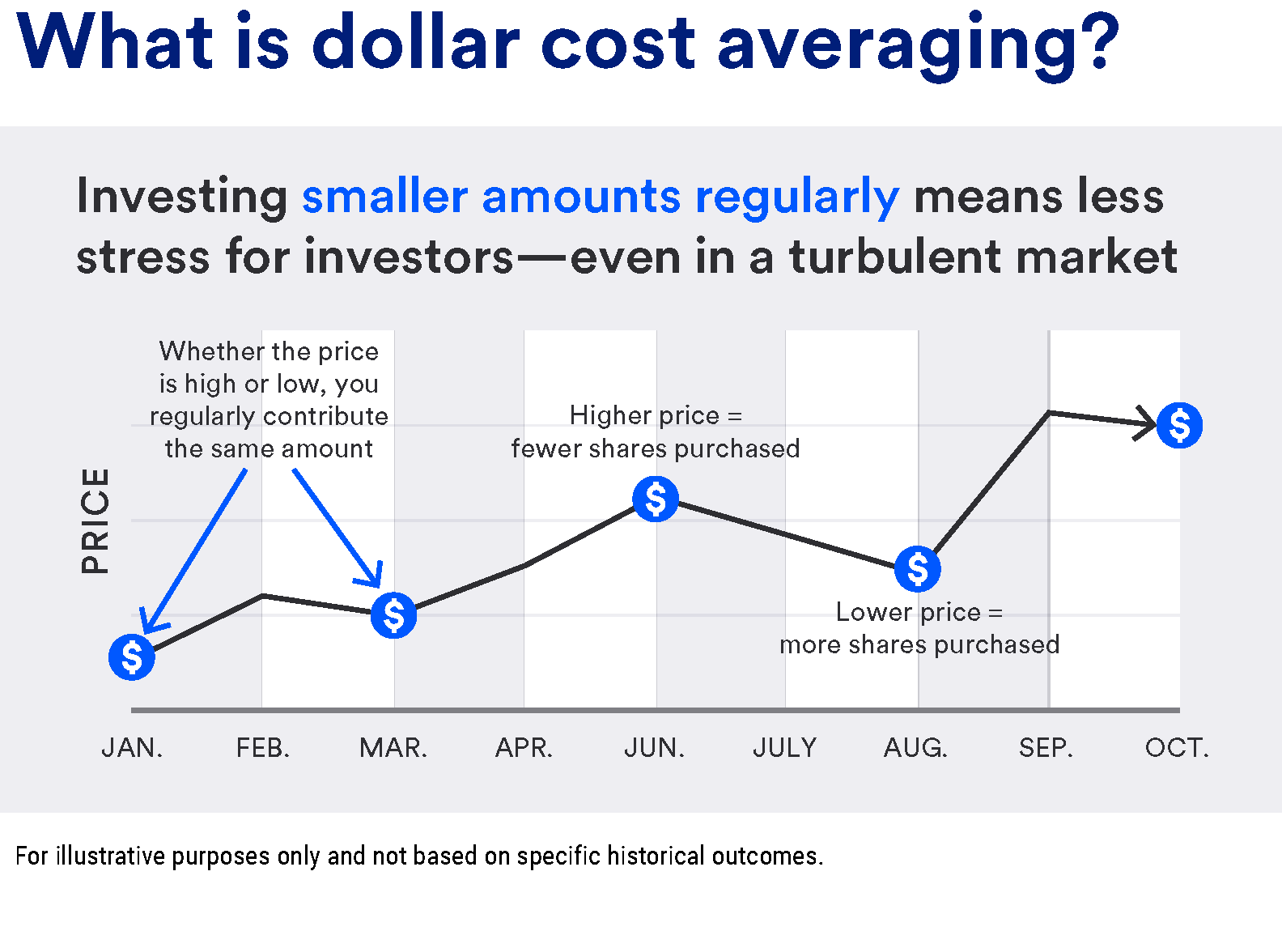Recent market volatility has a lot of investors wondering how to minimize its impact on their portfolio. No one wants to see the balance on their accounts decline. One strategy that can help balance out the volatility is called “dollar cost averaging” (DCA), and it can provide benefits to any type of investor.
“We're often confronted with the question, ‘How do I get started investing?’” says Rob Haworth, senior investment strategy director for U.S. Bank. “You may have a lump sum of cash from the sale of a business or property and are looking to put the money into a diversified portfolio of stocks and bonds. Or you could have a form of continuous cash flow, such as savings from your paycheck, and you want to know how to help it grow. Dollar cost averaging can be a good strategy for both situations.”
How does dollar cost averaging work?
Dollar cost averaging (or DCA investing) is the process of purchasing investments on a regular schedule instead of putting a large sum of money into the market all at once. The amount of money invested using this approach is usually smaller than a lump sum would be, but the contributions will build up steadily over time.
One of the most common dollar cost averaging examples is when an employee signs up for a workplace retirement plan, such as a 401(k). They agree to contribute a set percentage of their income into the retirement plan each pay period.

How to dollar cost average
For a specific DCA investing example, someone making $150,000 per year who is paid twice a month would receive gross pay of $6,250 per pay period. If they allocated 10% of their pay to a 401(k), they would be saving $625 out of each paycheck. At the end of the year, they would have saved $15,000. The return on the funds inside of their 401(k) would fluctuate based on the market.



